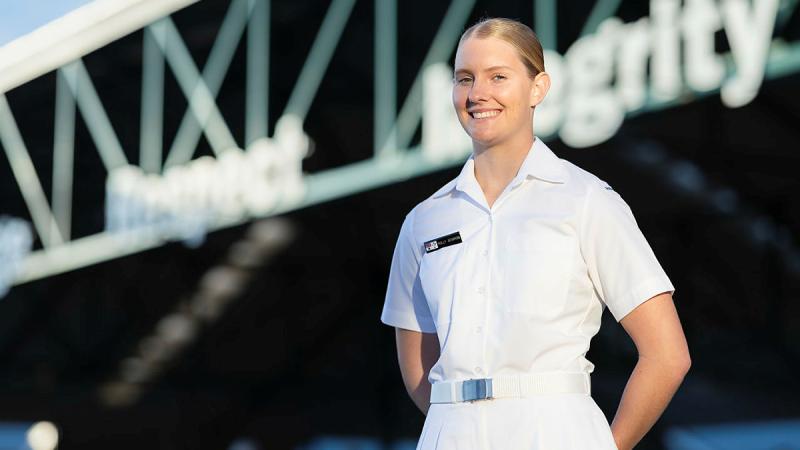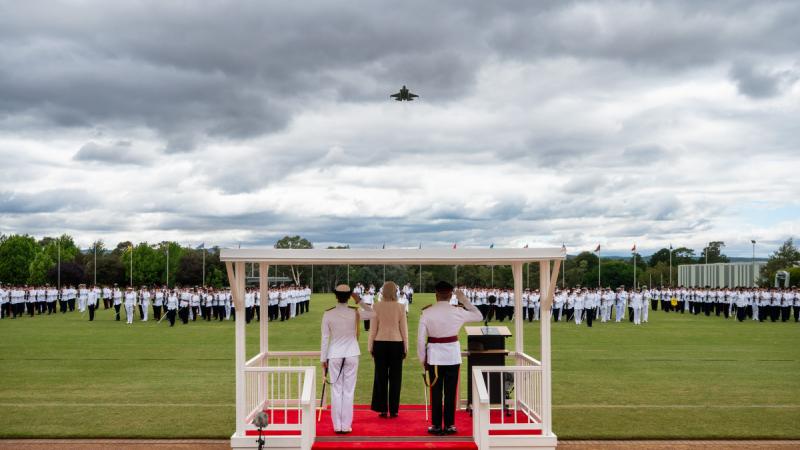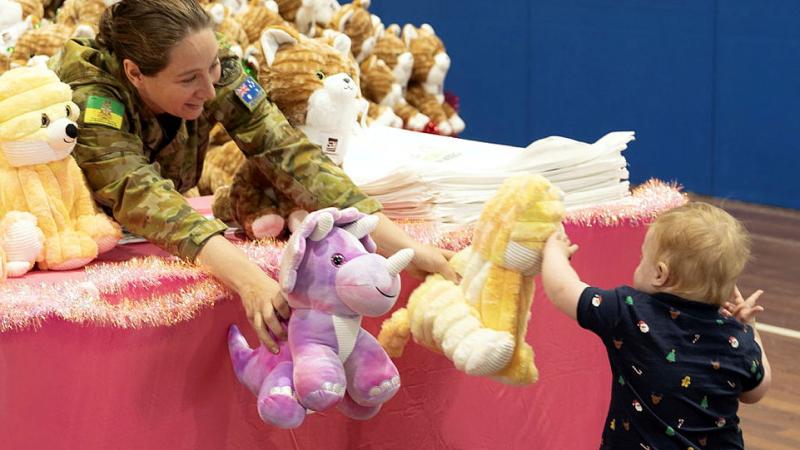11 June 2025
Amid the grounding presence of a yarning circle, reconciliation found its voice at RAAF Base Williamtown, where aviators came together for deep and meaningful conversations during National Reconciliation Week.
Biripi woman Corporal Karla Sewell-Blacklock welcomed aviators into the space with artwork featuring native plants – symbols of resilience and renewal – capturing this year’s theme, 'Bridging Now to Next'.
The culturally safe and inclusive space served as a platform for truth-telling and cultural exchange.
“It’s a circle, meaning the stories will never fall out – they continue to be passed from person to person,” Corporal Sewell-Blacklock said.
Following an Acknowledgement of Country, she guided participants through Aboriginal culture using a map of Aboriginal Australia, explaining the diversity of more than 250 languages and clan groups.
She then shared the Worimi Dreaming story of Guparr and Wabaray, two dolphins transformed by Biami the Great Spirit into the first Worimi people.
“They swam between Yaccaba and Tomaree headlands – Yaccaba being the male and Tomaree the female,” Corporal Sewell-Blacklock said.
“They created islands to protect the fish in the bay. Their selfless act was rewarded, and the dolphins were transformed on the shores of Birubi beach into the first Worimi people.”
Corporal Sewell-Blacklock is an Indigenous Liaison Officer in the Air Force and has supported children in foster care, youth detention centres and child safety systems.
She spoke passionately about the five pillars of reconciliation that supported meaningful change between Aboriginal and Torres Strait Islander peoples and non-Indigenous Australians.
“Our pathway programs bridge gaps and help break intergenerational cycles,” she said.
'Change won’t happen overnight, but we’re heading in the right direction.'
Corporal Sewell-Blacklock explained how historical acceptance ties into the theme of reconciliation and accepting the past.
“Saying sorry doesn’t mean you’re to blame – it’s accepting that a devastating thing happened in our history, and choosing to be part of the healing,” she said.
For Leading Aircraftman Jordan Dodd, an Aboriginal aviator from Western Australia’s Yamaji and Noongar mob, the yarning circle represented a step towards healing.
“It was a space where my voice could be heard and my culture acknowledged,” Leading Aircraftman Dodd said.
During an activity designed to encourage reflection, he chose the theme of totem from a set of cultural conversation cards.
“My dad’s Aboriginal, from WA, my mum’s white. For us, totems aren’t just symbols – they’re connections to identity, family and Country,” he said.
“Mine is the kookaburra. I would never eat or harm them – it is my duty to respect the animal. Knowing that helps ground me and shapes the person I am.”
Leading Aircraftman Dodd also reflected on the impact of the Stolen Generations.
“Many lost their identity and connection to land and people – caught between cultures, feeling too white to be black, and too black to be white,” he said.
“But with education and open conversations, we can start to fix it. Change won’t happen overnight, but we’re heading in the right direction.”
'Acknowledging those who came before us and understanding their connection to the land is powerful.'
Artefacts on display included hunting weapons such as the boomerang and a Coolamon – a vessel mainly used by women to carry everything from bush tucker to babies.
Local stories were shared, including that of the Gymea lily – native to the Port Stephens area, which held practical and cultural value for the Worimi people.
“The lily’s tall stems were used as spears, and its bloom signalled whale migration,” Corporal Sewell-Blacklock said.
“Worimi women would light fires on the beach and sing the whales to shore to feast. Nothing was wasted – the blubber, for instance, was used as skin protection.”
Leading Aircraftman Lincoln Grande, who grew up in Perth familiar with Noongar culture, said learning about Worimi traditions offered new insight.
“Acknowledging those who came before us and understanding their connection to the land is powerful. And handling the traditional tools brought that history to life,” Leading Aircraftman Grande said.
Commander Air Combat Group Air Commodore Pete Robinson said recognising and celebrating Indigenous history strengthened both the Air Force and the nation.
“It’s a vital part of who we are,” Air Commodore Robinson said.
“Acknowledging our shared history should be embedded in our culture, not limited to specific dates. It’s something we need to carry with us year-round.”


